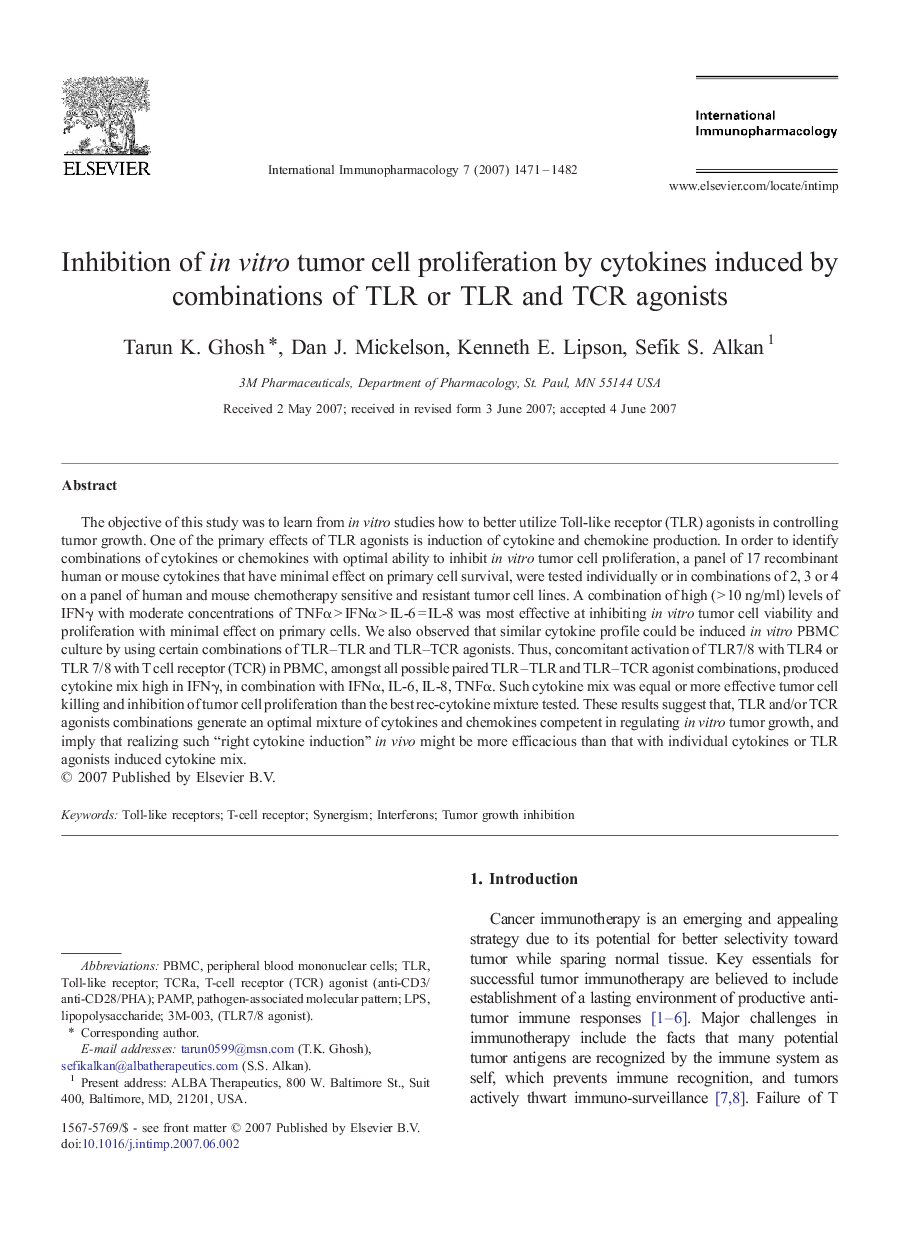| Article ID | Journal | Published Year | Pages | File Type |
|---|---|---|---|---|
| 2541923 | International Immunopharmacology | 2007 | 12 Pages |
The objective of this study was to learn from in vitro studies how to better utilize Toll-like receptor (TLR) agonists in controlling tumor growth. One of the primary effects of TLR agonists is induction of cytokine and chemokine production. In order to identify combinations of cytokines or chemokines with optimal ability to inhibit in vitro tumor cell proliferation, a panel of 17 recombinant human or mouse cytokines that have minimal effect on primary cell survival, were tested individually or in combinations of 2, 3 or 4 on a panel of human and mouse chemotherapy sensitive and resistant tumor cell lines. A combination of high (> 10 ng/ml) levels of IFNγ with moderate concentrations of TNFα > IFNα > IL-6 = IL-8 was most effective at inhibiting in vitro tumor cell viability and proliferation with minimal effect on primary cells. We also observed that similar cytokine profile could be induced in vitro PBMC culture by using certain combinations of TLR–TLR and TLR–TCR agonists. Thus, concomitant activation of TLR7/8 with TLR4 or TLR 7/8 with T cell receptor (TCR) in PBMC, amongst all possible paired TLR–TLR and TLR–TCR agonist combinations, produced cytokine mix high in IFNγ, in combination with IFNα, IL-6, IL-8, TNFα. Such cytokine mix was equal or more effective tumor cell killing and inhibition of tumor cell proliferation than the best rec-cytokine mixture tested. These results suggest that, TLR and/or TCR agonists combinations generate an optimal mixture of cytokines and chemokines competent in regulating in vitro tumor growth, and imply that realizing such “right cytokine induction” in vivo might be more efficacious than that with individual cytokines or TLR agonists induced cytokine mix.
